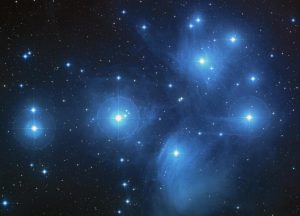The Sky in Oct/Nov
In the gathering build up October and November give us our last 2 months of somewhat reliable observing conditions, so make the most of it !
The Visible Planets
Mercury in its fleet footed fashion has now disappeared from our view and is in conjunction with the sun in October. Come November it will make its return to the evening sky. In November on the 22nd it comes within 4 degree’s of the much brighter Saturn.
Venus is always a special sight in the night or morning sky alike. In October Venus begins the month high in the western sky, setting 2 hours after the Sun, in its journey through Scorpius where by the end of the end of the month is will be just to the south of our favourite king of the planets Saturn. In November Venus will have a lovely close encounter with the 3 day old moon on the 2nd off the Month.
Mars is fading from its peak but is still high in the western sky in October in the constellation
Sagittarius and again this month has a couple of close encounters with Globular clusters including M28 on the 6th. It then spends the rest of the month crossing the rich star fields of this star rich constellation. In November Mars crosses over into Capricornus the “Sea Goat” just after it has a close encounter with yet another globular cluster, this time M75.
Jupiter is lost to the sun for most of October before making an appearance in the morning sky late in the month just before sunrise. In November Jupiter will become a worthwhile observing
target again in the early morning sky.
Saturn in Scorpius is now offering the last opportunity for a good view of its glorious rings in October as it gets closer to the sun in November.
Meteor Showers: October see’s the return of the reliable Orionid’s Meteor shower. They are reliable, as the source of these Meteors is the best known of all comets the massive “Haley”. The peak occurs on mornings of the 21st and 22nd of October where you may see 10 to 20 meteors per hour. The meteors are fast moving and bright and the hour or 2 before first light is the best time to catch this meteor shower. The Taurid Meteor shower is also worth a mention as although not high in number (7 per hour at peak) they are often bright are slow and the peak extends over many days from the 30th of October to the 7th of November with the 4th to the 7th seeing both the Southern and Northern Taurids having a combined peak.
Other Activities: Keep an eye on the Facebook page of “FNQ astronomers” set up by NightSkySecrets as a community observing group and to notify residents of FNQ of the big events in our night & daytime sky. There are many other deep sky delights to be seen if you have binocular s or a telescope and if your keen, come and see us at The Pier at the NightSkySecrets store, where we can fill you in on the hidden secrets of the Night Sky.
Astronomy is – looking Up !
Observing Equipment Advice
Naked Eye Viewing: This is the best way to see Meteor Showers, the board sweep of the Milky Way & track satellites across the night sky. Choose as dark site and a comfortable reclining position. This is FREE and just takes a bit of effort 🙂
Big Star clusters: we are talking about groupings of stars that are beyond a fuzzy blob, these are things like the clouds of Magellan, the Pleiades & a few selected nebulous regions. These are best seen with a pair of 7x to 10x Magnification binoculars with a 50mm lens. Prices start from around $100.
Fuzzy Blobs: You can’t make out what they are but you think they might be interesting ? These are best seen with a wide field telescope, starting price is around $250. These scopes gives you a nice contrast against the blackness of space.
The Invisible: Galaxies, faint nebula & planetary details, this is where scopes 6” in aperture and above come into play, these start at around $400 and how big you go is only limited by portability and budget (The biggest have 48” or 1.2m mirrors !)

